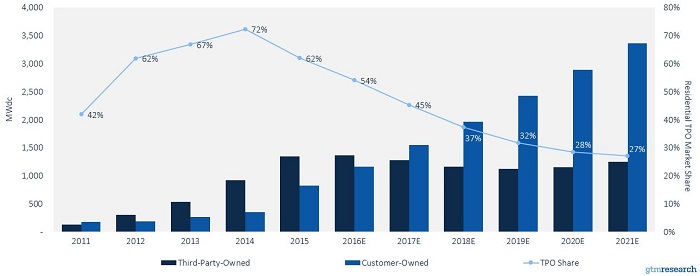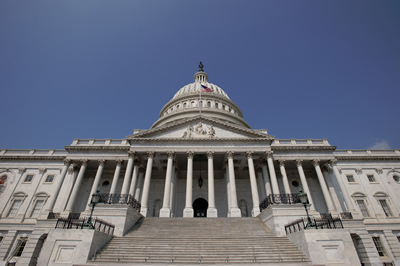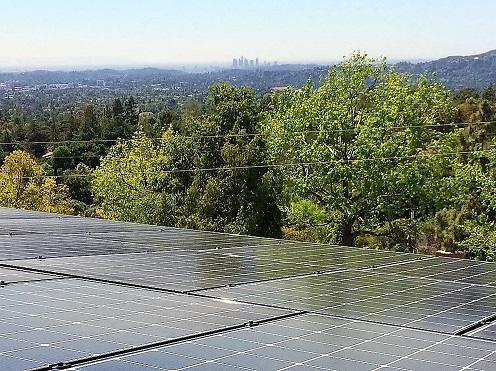Welcome to the
Run on Sun Monthly Newsletter

In this Issue: |
November, 2016
Volume: 7 Issue: 11
Five Reasons the ITC Won't be ScrappedAt Run on Sun we don't take partisan stances on politics. We believe everyone, regardless of politics, benefits from harnessing the unlimited resource of sun-powered PV systems. However, the recent election has raised questions about the future of federally-backed support for solar - specifically the federal solar investment tax credit (ITC). The short answer is, we are optimistic the current plan for the ITC to continue for three years at 30% then gradually sunset after five will be unaffected. Here's why: 1. The ITC is federal law. The President cannot change federal law by executive order without an act of Congress to change it.
4. Solar has already received bipartisan support. Leaders see solar not only as an environmental solution but an economic one, as well as an avenue for fuel independence. These reasons and more helped get the ITC extended last year by champions on both sides of the aisle. 5. State and local policies will prevail. Regardless of what happens at the federal level we can count on state and local policy to continue to support a thriving solar industry in California and many other states where the benefits are undeniable. The fact is, the ITC is federal law and laws are not easily changed. Even if it did somehow manage to be changed before the 5-year planned sunset, we are confident our state will step up to make sure adequate support continues to make solar an economically viable option for the public. Never fear! Solar is here to stay. (Thank you to CALSEIA and Executive Director Bernadette del Chiaro for the inspiration for this blog and for their invaluable efforts to advocate on behalf of the solar industry.) |
“The ITC won't be scrapped because… Solar is good for the economy!”
Help Us Spread the News!


We use Angie's List to assess whether we're doing a good job keeping valued clients happy. Please visit AngiesList.com in order to grade our quality of work and client service.
Direct Ownership of Residential Solar Systems
|

|
GTM Research: Residential TPO Penetration and Installations by Ownership Type, 2011-2021
There are several factors at play in this shift. The total cost to go solar has declined rapidly in recent years meaning the up-front cost continues to be less frightening. Today there are more attractive solar loan options available to homeowners as well. One popular option in California is the PACE (Property Assessed Clean Energy) government loan program which is repaid as an assessment on the homeowners property tax bill. Mosaic is another solar loan program available nationally. While loans do have interest rates and dealer fees to be aware of, the benefits of owning a system outright far outweigh the costs of third party ownership - such as financially damning escalator clauses, the inability to take the tax credit or local rebates, and the risk of selling your home to buyers who don't qualify for (or want) the solar lease.
Overall growth of the solar industry is also beginning to slow this year. After growing at more than 50% annually for the last four years, the residential market is expected to see a slower growth rate of 16% this year. The report shows that growth has slowed among all solar installation companies, but much more so for the top three national companies who previously relied upon the popularity of the solar lease. For the first time since 2013, these three will together install less than half the market's solar systems as their growth slows to just 12%. By contrast, growth among the remaining solar power installation market will slow to 36% according to GTM. It will be interesting to see how the "big three" handle this shift in the coming years.
One thing to note is that while growth is slowing among the largest companies, solar continues to grow overall. Smaller local companies have always offered, and preferred, to sell systems outright rather than through leases and these companies are becoming more popular as more research shows the true value of ownership vs leasing. As one of those companies, we have always stood by the data and educate all our clients on the realities of financing options as the last thing we want is to be in the business of locking people into a twenty-year-long bad deal! Curious as to the specifics of leasing vs owning? Check out our blog from almost two years ago: Top Five Reasons to Stay Away from that Solar Lease!
Ch-ch-ch-Changes to LA's Energy Mix!Los Angeles doesn't have a great reputation for being green. Sadly we are better known as a car-centric city frequently afflicted with smoggy skies. In fact, Los Angeles is consistently ranked as having the worst air pollution in the nation.
Recently our fair city took one step closer to changing that! Last April the Los Angeles City Council voted unanimously to approve a motion asking the LA Department of Water and Power (LADWP) to develop a plan for how the city can move toward 100% renewable sources of electricity. LADWP - the largest municipal utility in the country - currently gets about 20-25% of its energy from renewables (solar, wind, geothermal, biomass and waste). The biggest challenge to going 100% green will be to convert from a grid which relies on coal and natural gas, which can adjust supply to meet demand, to one which can handle the fluxuations of solar and wind. The largest reductions in greenhouse gas emissions - nearly 9 million metric tons - will be through DWP's existing plan to eliminate coal-fired power plants from their energy mix by 2025. (Side note: Shockingly, Pasadena's energy mix coming from Pasadena Water and Power, has an extraordinarily high percentage of power coming from coal at 34% compared to CA average of 6% with no plans as of yet to move toward renewables! Hopefully they'll follow in LA's footsteps!) Another 7 million metric tons of greenhouse gas emissions result from the remaining energy sources in LADWP's mix, largely natural gas. As we move away from coal we need to be careful to not be lured to just switch to cheap natural gas. Last year the Aliso Canyon gas leak disaster - the worst in US history - proved this fossil fuel is a very dangerous source of energy for our communities. 11,000 residents were evacuated and hundreds reported methane-related illnesses from the leak. Aliso released 100,000 tons of methane, which has a warming effect 80 times higher than CO2 over the short-term. Currently there are also natural gas storage facilities in Playa del Rey and Playa Vista. Obviously natural gas is a serious threat to our public health and the environment. If we are going to get to a fully clean power supply a commitment similar to the departure from coal needs to happen with natural gas... and the faster the better. With a 100-year old grid supplying 4 million Angelenos with power, LADWP is poised to make significant infrastructure investments. This is the perfect opportunity for the city to upgrade the system to accommodate the potential for a fossil-free future. Councilman - and co-author of the City Council motion - Paul Krekorian, emphasized the urgency for Los Angeles to move to clean energy: "This is an enormous step forward that will help restore our environment and lead us to a sustainable, fossil-free future. For the third year running, Los Angeles was ranked as having the worst air pollution in the country, which is unacceptable and unhealthy for our families and neighborhoods. To reverse this trend we need big thinking and bold, smart action." While Mayor Eric Garcetti has already set a goal of reaching 50% renewable energy by 2030, this recent legislation is only a starting point to research how to get to 100% but has no set timeline. This is a crucial first step, however, we are really looking forward to hearing the results of DWP's research. A realistic but ambitious time-bound roadmap to ending our reliance on fossil fuels is crucial to improving our chances of preventing climate change's most damaging effects. San Francisco and San Diego are also among eighteen other cities who have committed to 100% clean energy goals recently. Four cities are already proving it is possible with fully renewably powered systems! Los Angeles, as the 2nd most populous city in the country and most polluted, can serve as a particularly powerful role model for cities and jurisdictions across the country. These plans have the potential to both help stop devastating climate change impacts but also to boost economies in the process. Some opponents of a renewable transition worry that it will hurt the economy but the growth of renewable jobs in recent years and a growing local economy has proven that is a false threat. Last year's solar census reported that 10% of solar jobs - over 21,000 well paid jobs - are in Los Angeles! Going green saves money in the long-term. A report from the New Climate Economy found cities could save $17 trillion by 2050 by pursuing low-carbon solutions such as public transport, building efficiency, waste management and 'aggressive' solar implementation. Now is the time to kick our transition to clean energy into high gear at local and state levels! We look forward to being part of the solution! |


